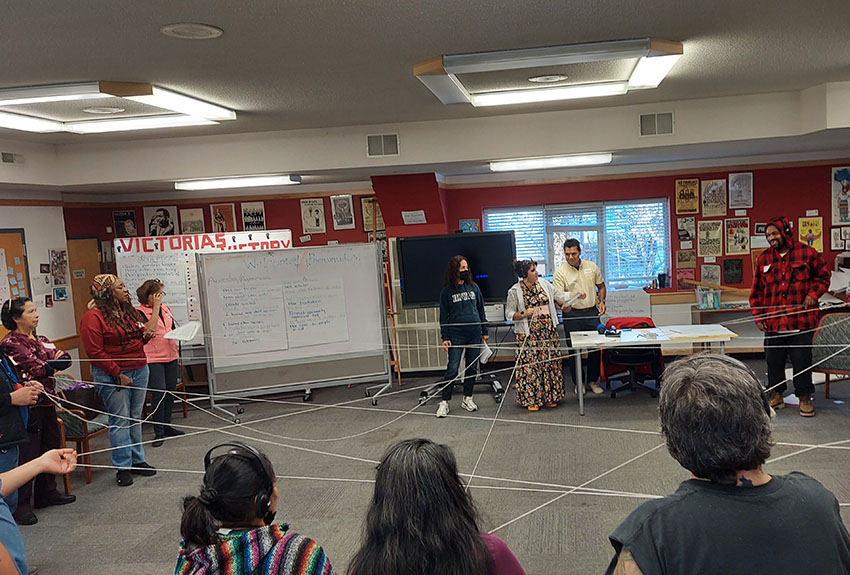In the realm of policy change, training plays a pivotal role in raising awareness, mobilizing stakeholders, and driving the momentum required for successful transformation.
But a lot of organizers and policy experts I talk to have trouble converting “dry” subjects into dynamic activities that leave participants feeling inspired to take action.
We’re going to take a look at how to convert dry or difficult subjects into dynamic activities using the techniques of show, engage, and ask.
This is precisely the approach used by the late Brailizan educator Augusto Boal to engage both community members and policy-makers alike in building solutions.

Signs of Disengagement: Navigating the Challenges
Before delving into this example, let’s look at a few signs that your audience might be disengaged.
Do you recognize any of the following?
- Lack of Participation: When attendees are passively listening without asking questions or contributing to discussions.
- Distracted Behavior: Frequent glancing at phones and side conversations.
- Limited Feedback: If participants aren’t providing feedback or sharing their thoughts during interactive activities.
- Monotonous Expressions: Facial expressions and body language devoid of enthusiasm or curiosity.
If learners are disengaged during the training, they are unlikely to become engaged after the training.
Let’s look to one solution from Latin America.

Legislative Theatre: A Case Study in Engagement
Augusto Boal, a Brazilian theater practitioner, introduced the concept of Legislative Theatre as a unique way to engage communities in the process of policy change.
This methodology intertwines theater and politics, creating a dynamic platform for citizens to voice their concerns and aspirations.
In one example, Boal facilitated a Legislative Theatre project in his home city of Rio de Janeiro. The goal was to address the issue of violence against women in the city.
Instead of presenting a traditional training session, Boal orchestrated a series of interactive theater workshops.
Participants, including both women and men from various backgrounds, collaborated to create short plays that depicted instances of violence and potential solutions.
What set Boal’s approach apart was its interactive nature.
The plays weren’t just performances; they were interventions. Spectators became “spect-actors,” able to step into the scenes and replace characters to suggest alternative actions and outcomes.
This immersive approach sparked genuine engagement because participants were not just absorbing information; they were actively shaping the narratives.
At the end of the workshops, a public performance was held, showcasing the plays and the audience’s interventions. This performance was attended by policymakers, law enforcement officials, and community leaders.
The real impact emerged when these decision-makers engaged in dialogue with the audience to understand their perspectives and ideas for policy change.

Strategies for Engaging Policy Change Training
Taking inspiration from Boal’s innovative approach, here are strategies to make training about policy change engaging:
In this example the people were invited to design a play used the principle of show don’t tell to illustrate a real-world scenario relevant to the life of the learner.
Rather than simply acting out the play, they decided to engage don’t present by inviting audience members in to provide solutions as “spect-actors.”
And they also used the principle of ask don’t explain, by inviting the group to make meaning of what they saw by posing a series of questions to the audience.
If Legislative Theater feels like a substantial leap for your policy efforts, rest assured that there are tons of alternative approaches to make your cause more captivating for the communities you collaborate with.

Putting it into Practice
Inspired by the example of Augusto Boal and others, we devised the SEA method to help educators like you design engaging activities on the causes and campaigns you work on every day.
Use the SEA method to design your next training for policy change and let us know how it goes!
If you are looking for more support, The Transformative Trainer program helps social change trainers align their training with their most urgent organizational goals, attract more of the right people to the training, and help participants turn learning into action.
Let us know if you found this helpful by leaving a comment below.
Happy training!
P.S. For even more free resources, sign up for our newsletter.





